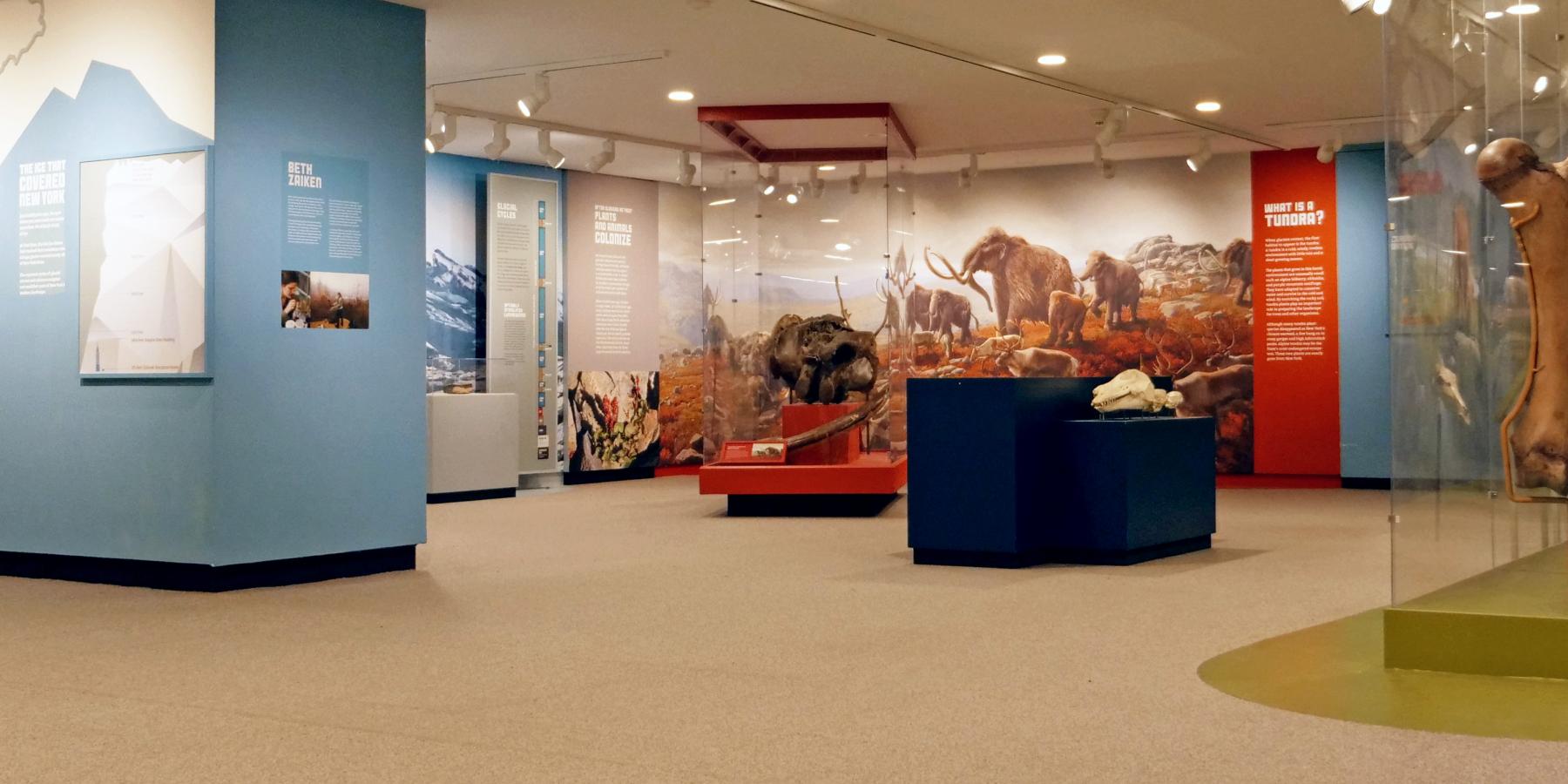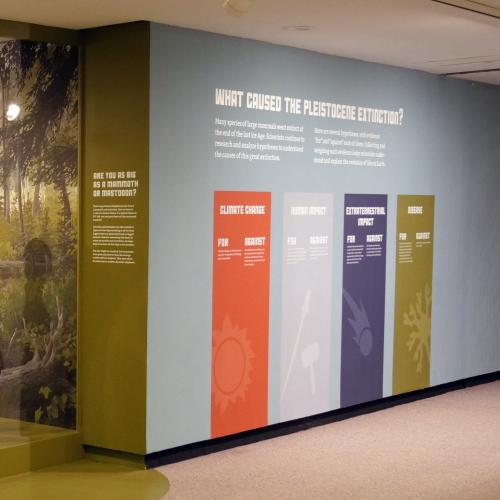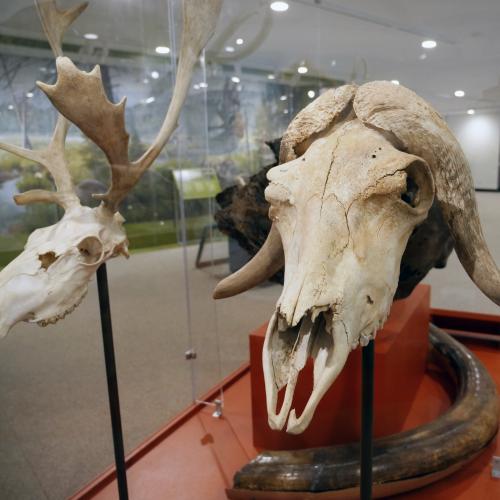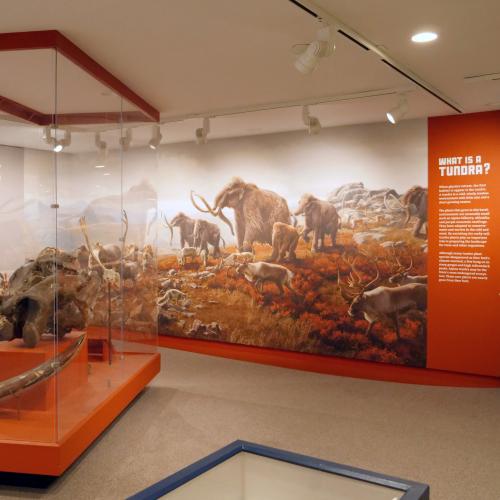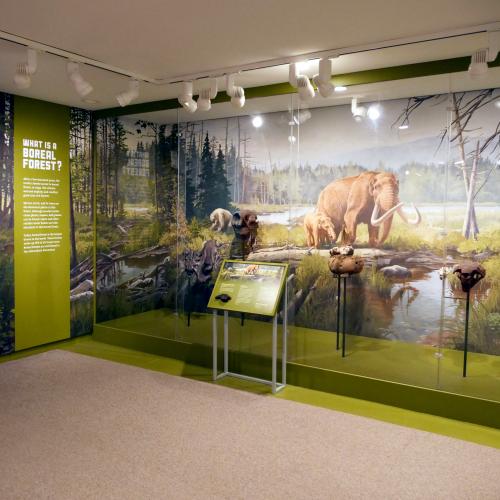Ice Ages: How Ice Shaped the Land and the Life in New York
Over the last two million years, New York has experienced several Ice Ages interspersed with warm periods. Gigantic glaciers covered the state, and then retreated. Each wiped the landscape nearly clean—changing the course of rivers, widening valleys, and rounding mountaintops. As a result, modern New York landscapes are geologically very young. New York looked very different 15,000 years ago, as the last Ice Age was ending. There were many large mammals including mastodons, woolly mammoths, giant ground sloths, and musk oxen. Most of these animals are now extinct or gone from New York.
Explore the Ice Ages Exhibit
This exhibit explores the geology and biology of present-day New York since the height of the last Ice Age about 25,000 years ago. Discover what a glacier is, how it works, and how it affected the landscape of the state. Additionally, we explore the organisms that lived here and how many of them ultimately went extinct about 12,000 years ago. View Ice Age specimens from the NYSM Collection, including fossilized specimens representing the ancient plants, animals, and geology of that time period.
The Ice that Covered New York
Just 24,000 years ago, the spot where the New York State Museum (housed in the Cultural Eduation Center) is located was under more than 1.5 miles (2.4 km) of ice. At that time, the last ice sheets had reached their maximum size. A huge glacier covered nearly all of New York State.


